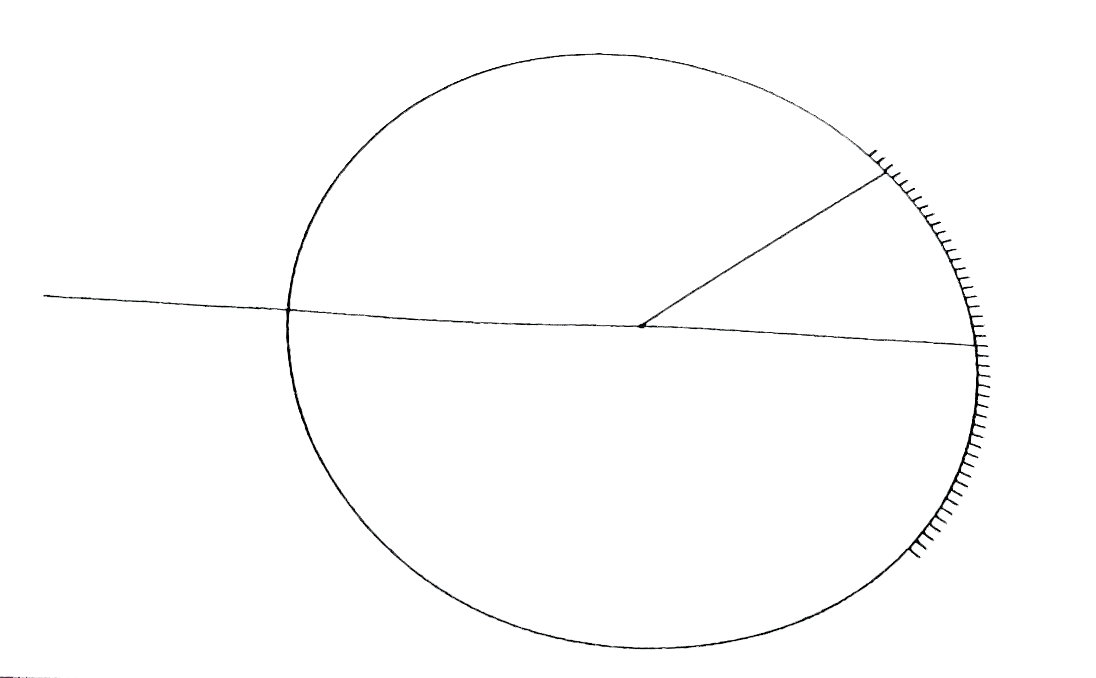Define the following terms in the context of spherical mirrors: Principal focus
Step-by-Step Solution:
1. Understanding Spherical Mirrors:
- Spherical mirrors are mirrors that are shaped like a portion of a sphere. They can be either concave (curved inward) or convex (curved outward).
2. Identifying the Principal Axis:
- The principal axis is an imaginary line that runs horizontally through the center of the mirror, dividing it into two equal halves. It is the line along which light rays are typically analyzed.
3. Incident Light Rays:
- When a light ray travels parallel to the principal axis and strikes the mirror, it is referred to as an incident ray.
4. Reflection of Light Rays:
- Upon striking the concave mirror, the incident ray reflects off the surface. The law of reflection states that the angle of incidence is equal to the angle of reflection.
5. Convergence of Reflected Rays:
- For a concave mirror, the reflected rays that were initially parallel to the principal axis converge at a specific point after reflection. This point is where all the reflected rays meet.
6. Defining the Principal Focus:
- The principal focus (denoted as 'F') is defined as the point on the principal axis where the reflected rays converge (for a concave mirror) or appear to diverge from (for a convex mirror).
7. Final Definition:
- Therefore, the principal focus of a spherical mirror is the fixed point on the principal axis where incident rays parallel to the principal axis converge after reflection (for concave mirrors) or appear to diverge from (for convex mirrors).
- Spherical mirrors are mirrors that are shaped like a portion of a sphere. They can be either concave (curved inward) or convex (curved outward).
- The principal axis is an imaginary line that runs horizontally through the center of the mirror, dividing it into two equal halves. It is the line along which light rays are typically analyzed.
- When a light ray travels parallel to the principal axis and strikes the mirror, it is referred to as an incident ray.
- Upon striking the concave mirror, the incident ray reflects off the surface. The law of reflection states that the angle of incidence is equal to the angle of reflection.
- For a concave mirror, the reflected rays that were initially parallel to the principal axis converge at a specific point after reflection. This point is where all the reflected rays meet.
- The principal focus (denoted as 'F') is defined as the point on the principal axis where the reflected rays converge (for a concave mirror) or appear to diverge from (for a convex mirror).
- Therefore, the principal focus of a spherical mirror is the fixed point on the principal axis where incident rays parallel to the principal axis converge after reflection (for concave mirrors) or appear to diverge from (for convex mirrors).
Similar Questions
Knowledge Check
Which of the following statements are incorrect for spherical mirror.
Aa concave mirror forms only virtual images for any position of real objectBa convex mirror forms only virtual images for any position of real objectCa concave mirror forms only a virtual diminished image of an object placed betwwen its pole and the foucsDa convex mirror forms a virtual enlarged image of an object if it lies between its pole and the foucs.
Define the following terms in the context of spherical mirrors :
Pole, centre of curvature, principal axis, and principal focus.
View SolutionDefine the following terms in the context of spherical mirrors: Centre of curvature
View SolutionWhich spherical mirror has a real focus ?
View SolutionDefine the following terms :
(i) Power of a lens
(ii) Principal focus of a concave mirror
(b) Write the relationship among the object distance (u), image distance (v) and the focal length (f) of a
(i) Spherical lens
(ii) Spherical mirror
(c) An object is placed at a distance of 10 cm from optical centre of a convex lens of focal length 15 cm. Draw a labelled ray diagram to show the formation of image in this case.
View SolutionIndicate the following terms related to spherical mirrors in figure : pole, centre of curvature , radius of curvature , principal focus.

View SolutionDefine the focal length of a spherical mirror.
View SolutionDefine principal focus.
View Solution
